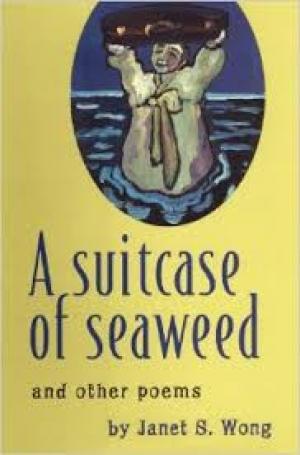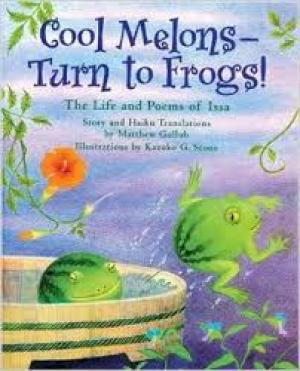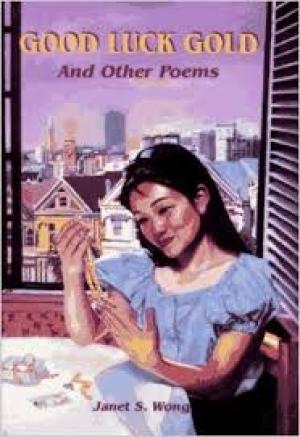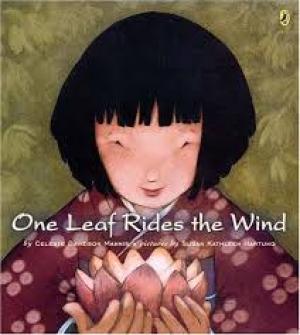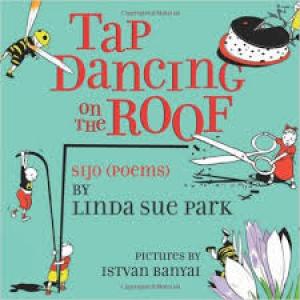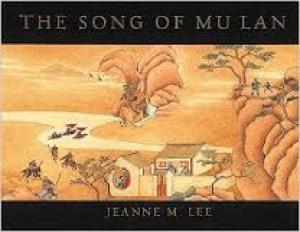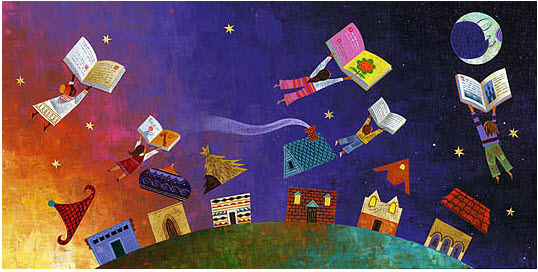Poetry: Asian Pacific American Heritage
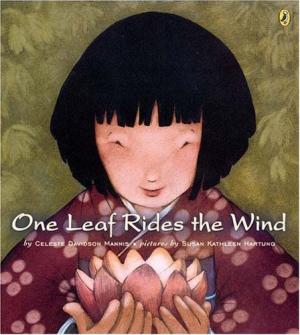
These collections offer a range of poems to enjoy, from haiku to poems about dragon boat races. These poems may also offer helpful models for poetry-writing lessons.
A Suitcase of Seaweed and Other Poems
Wong writes poems of realization and identity. Whether the words are about customs or careers, they provide a sense of who the author has become because of her pride in her blood-lines.
Brown Is Beautiful: A Poem of Self-Love
On a hike with her grandparents, a young Indian-American girl makes note of all the things in nature that are brown, too. From a nurturing mother bear, to the steadiness of deep twisting roots, to the beauty of a wild mustang, brown is everywhere! On her way, the girl collects the beautiful brown things she encounters as mementos for a scrapbook to share with a very special new addition to her family — a baby brother!
Cool Melons--Turn to Frogs!
Born in 1763 on a farm in central Japan, Issa began writing Haiku as a young child. Matthew Gollub has integrated the story of Issa's life and selections of his best-known work.
Good Luck Gold and Other Poems
Easy-to-understand poems explore what it's like to grow up Asian in America. Readers will see themselves in the everyday activities of the poet who dispels typical notions of how Asians behave and how they excel. Perhaps, too, readers will realize the hurt that words can cause in several sophisticated and quite personal poems.
I Am the Night Sky: And Other Reflections by Muslim American Youth
During an era characterized by both hijabi fashion models and enduring post-9/11 stereotypes, ten Muslim American teenagers came together to explore what it means to be young and Muslim in America today. These teens represent the tremendous diversity within the American Muslim community, and their book, like them, contains multitudes. Bilal writes about being a Muslim musician. Imaan imagines a dystopian Underground. Samaa creates her own cartoon Kabob Squad. Ayah responds to online hate.
Knock on Wood: Poems about Superstitions
Original poems combine with stunning illustrations reminiscent of folk art, to explore superstitions and superstitious beliefs from black cats to knocking on wood — and lots more. An author's note with a bit of information about superstitions concludes this engaging book.
My Chinatown
It's a New Year in Chinatown, but one little boy from Hong Kong wonders, "How can it ever be a good year thousands of miles from home?" As he moves through the seasons, however, New York finally begins to feel like home. Told in verse, these poems capture the challenges of adapting to a new life from a child's point of view. Vivid paintings with a photograph-like quality bring the poems to life.
One Leaf Rides the Wind
This richly illustrated collection of haiku poems is a counting book as well as an introduction to Japanese gardens and to a poetic form. From one leaf chased by a little girl to 10 stone lanterns, this garden can be enjoyed on several levels.
Tap Dancing on the Roof: Sijo
Like haiku, sijo — a little known, brief poetic form from Korea — looks at everyday activities from breakfast to the weather. Sophisticated illustrations complement the seemingly simple language to delight readers and listeners.
The Song of Mu Lan
Jeanne M. Lee presents the ancient Chinese folk poem that tells the legend of Mu Lan. Dressed as a young man, Mu Lan goes to battle in her father's place and becomes a revered warrior even as those around her don't know her true identity. Beautifully detailed illustrations accompany the poem, as does a brief author's note. Bilingual English-Chinese.
Multicultural Literature
See more great related resources and videos in our Multicultural Literature section!

